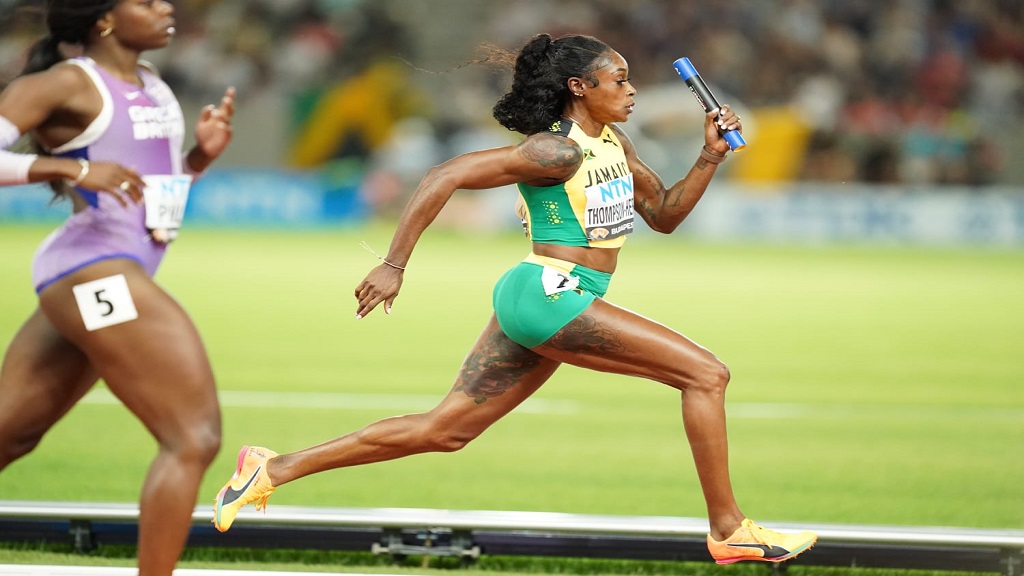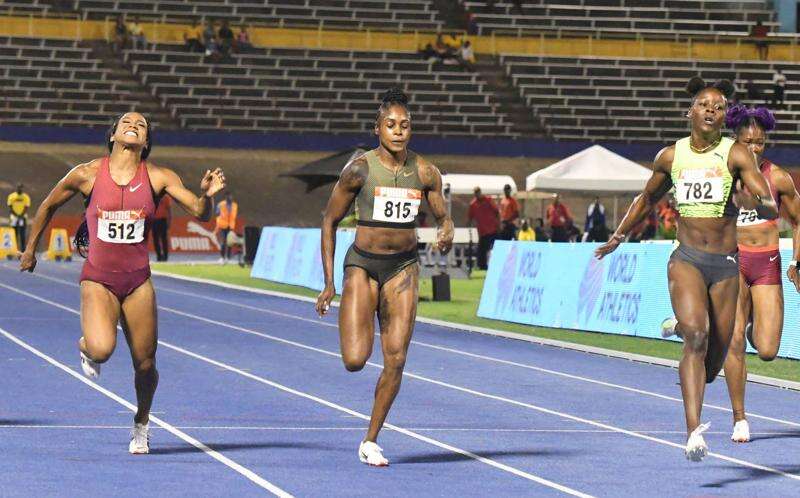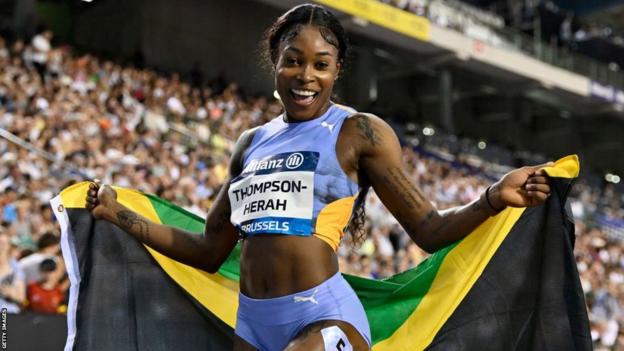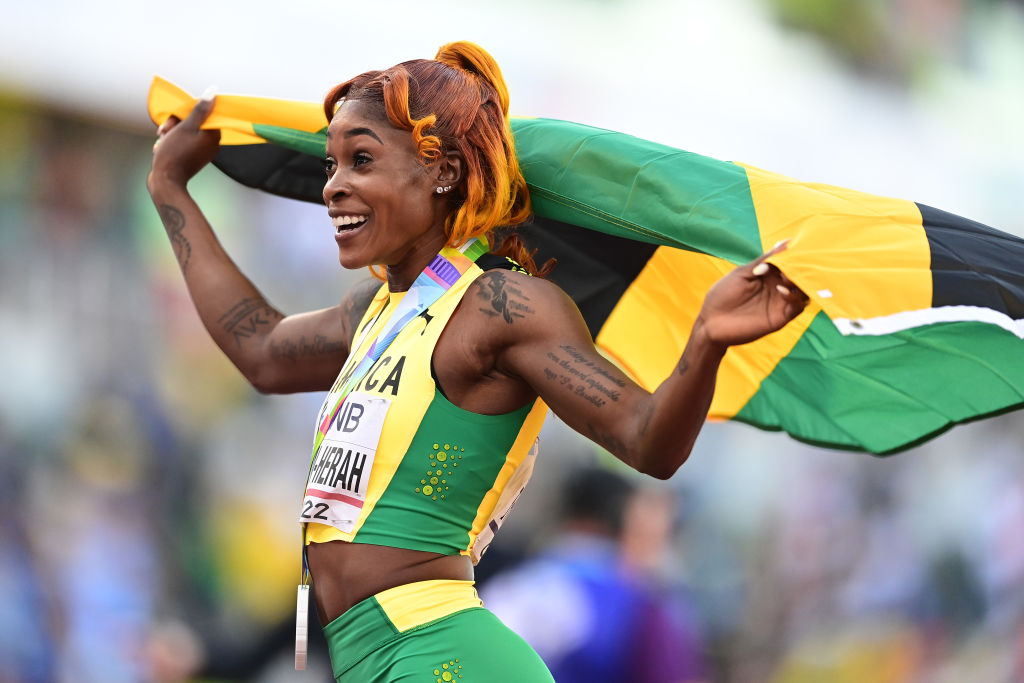
In a surprising move that sparked controversy across the athletics community, Olympic sprint sensation Elaine Thompson-Herah recently bid farewell to her longtime coach, Shanikie Osbourne, leading to a flurry of speculation and online discussions. However, it was Thompson-Herah's husband, Derron Herah, who stepped forward to shed light on the underlying reasons for the coaching switch, offering a glimpse into the complex world of athlete-coach relationships.
In an exclusive interview with SportsMax TV, Derron Herah addressed the backlash that followed Thompson-Herah's departure from the MVP Track Club, emphasizing the need to set the record straight amid the ongoing scrutiny. Her decision to part ways with Osbourne, he argued, was not a hasty move but a result of a protracted series of events and disagreements, particularly in the financial realm.

Herah recounted the challenges they faced from the moment Thompson-Herah left MVP, facing numerous attacks and criticisms. Despite their initial reluctance to engage with the online chatter, the couple decided it was time to offer a candid perspective on the matter. "Typically, you will see different stories for many reasons, and I just let it pass and I didn’t see the need to explain myself. However, this coming season I decided to approach things a little bit differently because, at the end of the day, we are human," explained Derron.
One pivotal point of contention, as disclosed by Herah, was the financial arrangement between Thompson-Herah and Osbourne. According to Herah, negotiations surrounding coaching fees escalated, leading to an impasse that ultimately resulted in the split. While customary coach earnings typically range from 10-15% of an athlete's earnings, the disagreement emerged when Osbourne insisted on the higher end of the spectrum.

"I suggested a figure for her but she did not agree to it. I talked to Elaine and she talked to her, but we did not get to an agreement. I did not want a third party to be involved, but we had to bring in an agent," revealed Herah. The negotiations reached a climax when Osbourne proposed a figure that Herah deemed excessive, prompting him to seek an alternative coaching arrangement.
Crucially, Derron Herah underscored that the decision to part ways with Osbourne did not impact Thompson-Herah's recent athletic achievements, such as her season-best performance at the Prefontaine Classic. He emphasized that he had been actively involved in her training and strategic planning since the end of the 2022 season, dispelling any notion that the coaching change was responsible for her success.

As the saga unfolded, it became evident that the financial aspects of the coach-athlete relationship played a central role in the separation. Osbourne's insistence on a specific percentage of Thompson-Herah's earnings clashed with Herah's vision for a more amicable and reasonable agreement. The move to a new coach, according to Herah, was driven by the desire for a coaching structure that aligns with the athlete's goals without straining the financial partnership.

The crux of the matter lies in the disagreement over the coach's compensation structure. Thompson-Herah's husband sheds light on the coach's insistence on a 15% cut of all earnings, prompting a strategic move away from percentage-based deals. Instead, the couple sought a fixed annual salary. However, the coach's representative proposed a staggering 100 million Jamaican dollars, equivalent to approximately 700,000 US dollars.
ericka's coach, emphasizing the significant departure from the standard percentage.
The financial dispute is not merely a matter of figures but a strategic consideration for Thompson-Herah's overall career. There are concerns about potential damage to her earning potential and jeopardizing lucrative sponsorship deals, particularly with Puma. He highlights the sensitivity of disclosing earnings, fearing it might breach contractual obligations and create misconceptions among coaches and management.
The coach's counter proposal of a 5 million US dollar figure, allegedly representing Thompson-Herah's annual earnings, became a point of contention. The husband disputes this estimate, asserting that Elaine doesn't come close to earning such a substantial amount in a year. This dispute reveals a stark contrast in perspectives, with the coach seemingly benchmarking Thompson-Herah against global icons like Usain Bolt, whose reported Puma deal allegedly reaches 10 million US dollars annually.

The analytical lens on Thompson-Herah's situation unveils a layered narrative beyond mere financial disagreements. It explores the nuanced challenges of valuation in the track and field world, where an athlete's marketability, achievements, and global recognition play a pivotal role. Also note, the challenges Elaine may be facing as it relates to being as commercially prominent as Bolt. While she is a double double sprint champion, her global popularity might not match that of the legendary Jamaican sprinter.
As the story unfolds, it becomes a compelling exploration of the intersection between athletic prowess, financial negotiations, and the broader perceptions that shape an athlete's career trajectory. Thompson-Herah;'s journey, now laden with financial intricacies, adds a layer of complexity to the narrative, leaving the athletic world eagerly awaiting the outcomes of this pivotal juncture.
